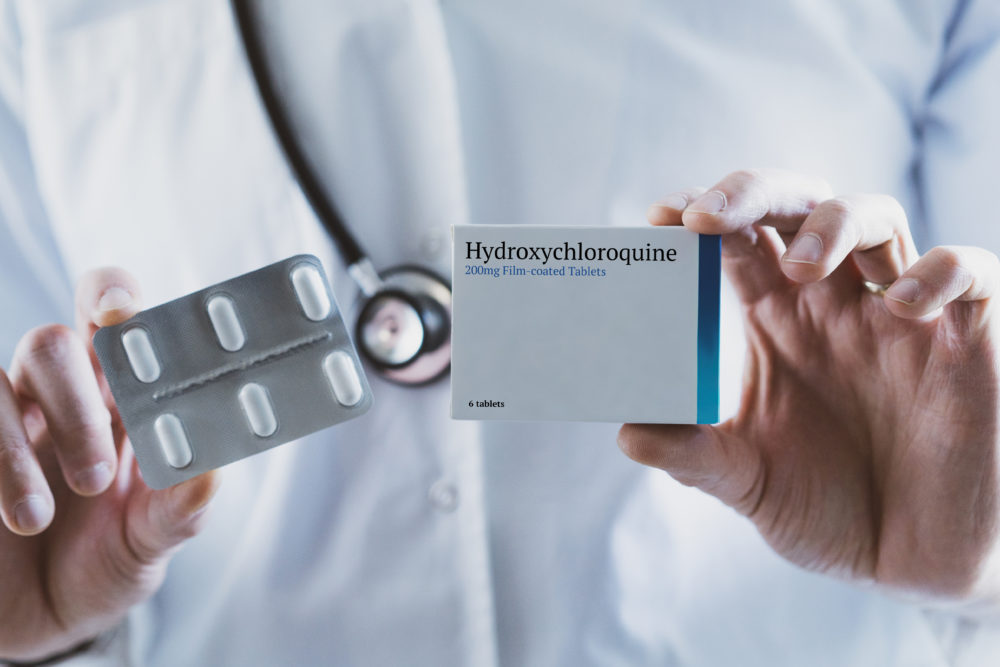Hydroxychloroquine Side Effects Linked to Increased Retinopathy Risk: Study
The risk of retinopathy from hydroxychloroquine side effects increased with dosage strength and long-term use, researchers warn

The findings of a new study raise concerns about the potential side effects of hydroxychloroquine, a drug once touted by some as a potential treatment for COVID-19, indicating that it may increase the risk of retinopathy, which can result in serious vision problems or blindness.
Researchers from Harvard Medical School warn that the risk for retinopathy from hydroxychloroquine was greater among patients who received higher doses in the first five years of treatment, according to findings published on January 17, in the journal Annals of Internal Medicine.
The study was funded by the National Institutes of Health, involving data on 3,325 patients who were 18 years and older and received hydroxychloroquine for five or more years between 2004 and 2020. The participants had guideline-recommended serial retinopathy screening.
Hydroxychloroquine Vision Loss Risks
Hydroxychloroquine is recommended as a treatment for patients with systemic lupus erythematosus and is also often used for other inflammatory conditions. During the height of the COVID-19 pandemic, many were claiming the drug helped treat patients with coronavirus, and emergency authorization was given by the Food and Drug Administration (FDA). However, the agency later rescinded emergency use of hydroxychloroquine after scrutiny of the data indicated problems with the study.
In this new study, researchers assessed patient doses of hydroxychloroquine from pharmacy dispensing records, and retinopathy was assessed by optical exams and imaging.
Overall, 81 people developed hydroxychloroquine retinopathy. Of those, 56 cases were mild, 17 were moderate, and eight were severe. The incidence rate of retinopathy was 2.5% for patients with 10 years of use and 8.6% for those with 15 years of use. Patients taking higher doses during the first five years faced an increased risk.
The cumulative incidence of retinopathy at 15 years was 22% for those with doses higher than 6 mg/kg per day, 11% for patients with doses 5 to 6 mg/kg per day, and 3% for 5 mg/kg per day or lower. The risk for moderate to severe retinopathy at 15 years was 6% for higher doses, 2% for average doses, and 1% for those with lower doses per day.

Did You Know?
Millions of Philips CPAP Machines Recalled
Philips DreamStation, CPAP and BiPAP machines sold in recent years may pose a risk of cancer, lung damage and other injuries.
Learn MoreIn all, most cases of retinopathy from hydroxychloroquine were mild but higher doses were linked with a progressively greater risk for incident retinopathy.
Another study published in 2020 echoed the negative side effects of hydroxychloroquine and highlighted potential vision loss for those using the drug. Patients using the drug suffered ocular toxicity which may lead to maculopathy vision loss, a type of vision loss that doesn’t lead to full blindness, but central vision loss. Patients taking the medication had increased rates of Bull’s Eye maculopathy, pre-maculopathy, and blurred vision.
Researchers emphasize the importance of using the minimum dosing necessary, conducting annual screenings for vision changes, and avoiding unnecessary use, like those opting to take the drug to treat COVID-19.
Get more articles like this sent directly to your inbox.
"*" indicates required fields






0 Comments